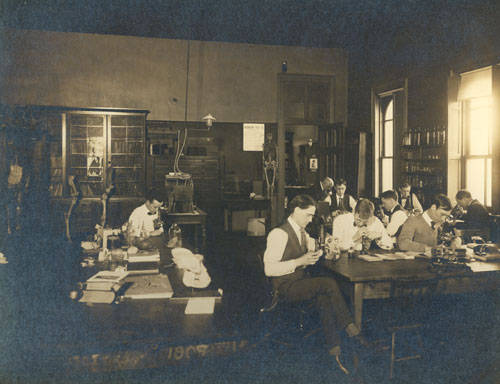03.20.20Alex Barba’s Bio Class: An Example of a Synchronous Online Lesson
Over the past few days I’ve been trying to blog examples of how teachers are doing online education for their students. You can see some of those here and here, and some big picture guidance here.

The examples I’ve shown so far have been ‘asynchronous’–meaning that teachers aren’t live with students but rather send them tasks to complete often with short video introductions. ‘Synchronous’ online teaching–you, live with a group of students–can be more challenging, but this video of Alex Barba’s AP Bio class at Uncommon Schools’ Lincoln Park High School in Newark is a really nice model of some simple and some more complex things teachers can do to make this kind of instruction work.
Since one of our big pieces of advice right now is to keep it simple, this post is going to deal with some of the simpler things Alex does really well. I’ll post again later with an interview with Alex in which we look at some of the more advanced things she’s doing. But again when in doubt, keep it simple.
First here’s the video:
The first thing to notice about Alex’s lesson is how familiar it is. It feels just like a classroom! Most of the elements of a bricks and mortar classroom are there. The most obvious is Cold Call. It’s so critical to make sure students–who are far away in various settings some of which may be distracting too–are always productively engaged. And so Alex simple Cold Calls students to analyze the diagram she’s showing. Doubly great is the fact that she uses ‘follow-on’ Cold Calls… that is, she calls on student to develop one another’s ideas. You have to listen all the time, whether it’s your teacher or a peer talking.
Another key element of a good bricks and mortar classroom is Culture of Error…the culture a teacher carefully builds so that students feel comfortable making mistakes. I love that one student Alex calls on doesn’t know how to answer the first part of the problem but admits it freely, describes what she does know, and is open to hearing more. That’s critical in any classroom and its doubly so here. You’ll notice that there’s no judgment from Alex. Her response to a student who can’t answer the whole question is to help her without criticism. “Let’s stick with part A…” She’s set herself up for this brilliantly when she Cold Calls Edna: “Can you go ahead and start us off with the process your group took?” “Start us off” is such a great phrase because it implies that the first answer is unlikely to be sufficient. Any follow-ups to or improvements on the answer Edna gives aren’t a judgment on her work because we knew they were going to happen all along.
Anyway, the Cold Calling in a safe and supportive culture is so important online. It’s critical to help students constantly feel engaged and accountable. IMO Alex crushes that.
The other thing that makes any great bricks and mortar classroom hum is having lots of clear systems and routines, and you can see those here. From attentiveness with which students know to mute and unmute, to the expectation that students are looking at the right supporting documents. If I could add one thing to Alex’s systems and routines it would be the expectation that students be “face-visible” in their screens: A lot of tops of heads and sometimes no eyes and faces visible. It’s a small thing but it socializes attentiveness and lets you read expressions. Regardless that’s a tiny thing in a vibrant online classroom.
There are also great discussion systems here but they’re more complex to implement so we’ll talk about them in the next blog.
